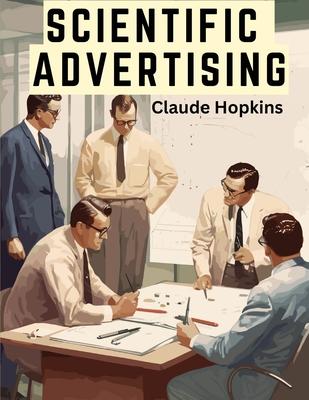"Scientific Advertising" is a seminal book written by Claude C. Hopkins, a renowned advertising pioneer, and copywriter. First published in 1923, the book is considered a classic in the field of advertising and marketing. It is known for introducing the concept of data-driven, measurable advertising techniques, which significantly influenced the advertising industry and continues to be relevant in the digital marketing era.
Key aspects of "Scientific Advertising" include:
Measurable Advertising: Claude Hopkins advocated for the use of scientific methods to measure the effectiveness of advertising campaigns. He believed that advertising should not be based on guesswork or creative intuition but on empirical evidence and data. Advertisers should track and measure the results of their campaigns to determine what works and what doesn't.
Emphasis on Direct Response: Hopkins stressed the importance of direct response advertising, where the goal is to elicit a specific, immediate response from the audience, such as making a purchase, filling out a form, or taking a specific action. This allows for precise measurement and optimization of ad campaigns.
A/B Testing: Hopkins popularized the concept of A/B testing or split testing, where two versions of an ad are compared to determine which one performs better. This approach enables advertisers to refine their messages and strategies based on actual results.
Focus on Headlines: The book emphasizes the significance of the headline in advertising. According to Hopkins, the headline is the most critical element of an ad, as it determines whether the reader will continue to engage with the content or move on. He provided insights on creating compelling headlines that grab attention and drive interest.
Writing Persuasively: Hopkins discussed the art of persuasive writing in advertising, emphasizing that advertisements should be clear, concise, and written in a way that resonates with the needs and desires of the target audience. He stressed the importance of highlighting the unique selling proposition (USP) of a product or service.
ROI-Focused Advertising: "Scientific Advertising" introduced the idea that every advertising dollar spent should be seen as an investment with an expected return on investment (ROI). Advertisers should aim to maximize the return for their advertising expenditure.
Evergreen Principles: Despite being published almost a century ago, many of the principles and strategies discussed in the book remain relevant today, especially in the context of digital advertising and online marketing.
"Scientific Advertising" by Claude Hopkins remains a foundational work in the field of advertising and marketing. It emphasizes the importance of data-driven decision-making, the need for continuous testing and optimization, and the focus on delivering clear and persuasive messages to target audiences. This book has had a profound and lasting impact on the advertising industry and is a valuable resource for anyone interested in the art and science of advertising.
